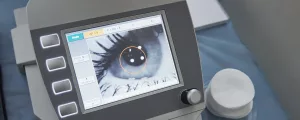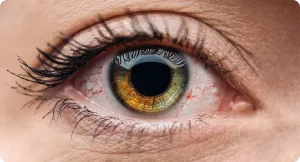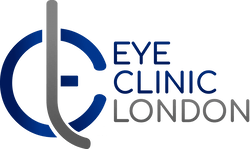Who Is a Bad Candidate for LASIK?

LASIK has become one of the most popular vision correction procedures in the world. It offers quick recovery, minimal discomfort, and impressive long-term results. For most people, it’s life-changing a chance to see clearly without glasses or contact lenses.
Despite its popularity, LASIK may not be suitable for everyone due to certain eye conditions, prescriptions, or health issues that could affect safety or effectiveness. Knowing whether you’re a good candidate is the first and most important step before considering the surgery.
In this article, I’ll walk you through the main factors that might make someone a poor candidate for LASIK, the reasons behind them, and what alternative options might be a better fit for your eyes.
What Is LASIK and How Does It Work?

Before discussing who shouldn’t have LASIK, let’s briefly recap how it works.
LASIK (Laser-Assisted In Situ Keratomileusis) reshapes the cornea the clear front part of your eye using a precise laser. By changing how light enters your eye and focuses on the retina, it corrects vision problems like:
- Short-sightedness (myopia)
- Long-sightedness (hyperopia)
- Astigmatism (blurred or distorted vision)
The results are usually permanent, and many people achieve 20/20 vision or better. However, because the procedure involves removing corneal tissue, not every eye is suitable for it.
Why Not Everyone Can Have LASIK
LASIK’s success depends on the health, structure, and stability of your eyes. If any of these factors are compromised, the procedure could lead to complications, unsatisfactory results, or even long-term damage.
This is why a thorough pre-operative eye assessment is crucial. During your consultation for LASIK surgery in London, your surgeon will perform several scans and measurements to evaluate whether LASIK is the safest option for you.
- Thin or Irregular Corneas
Your cornea needs to be thick enough for the laser to reshape it safely. If it’s too thin, there’s not enough tissue to work with, and removing any could weaken the cornea’s structure.
This can increase the risk of corneal ectasia a rare but serious complication where the cornea bulges forward, causing distorted vision.
People with keratoconus, where the cornea thins and becomes cone-shaped, are at higher risk because their corneas are structurally weak.
Alternative options:
- PRK (Photorefractive Keratectomy) – A surface laser procedure that doesn’t involve cutting a flap, suitable for thinner corneas.
- ICL (Implantable Collamer Lens) – A lens inserted inside the eye without altering the cornea.
- Unstable Prescription
LASIK provides the best results when your vision has remained stable for at least 12 months. If your prescription is still changing, the surgery may correct your current vision but not future changes, leading to regression.
This is especially common in younger patients, whose eyes may continue changing into their mid-20s.
You might not be ready if:
- Your prescription changes by more than 0.5 dioptres within a year.
- You recently switched glasses or contact lenses for stronger ones.
If you’re under 21, most surgeons will recommend waiting until your eyesight has fully stabilised.
- Severe Refractive Errors
LASIK works well for mild to moderate prescriptions. However, if your prescription is extremely high, it may require removing too much corneal tissue, increasing the risk of complications.
For example:
- Above -10.00 for short-sightedness.
- Above +4.00 for long-sightedness.
- Very high or irregular astigmatism.
Alternative options:
- ICL surgery is ideal for high prescriptions because it doesn’t reshape the cornea.
- Refractive lens exchange (RLE) may be suitable for older adults with severe prescriptions.
- Dry Eye Syndrome
If you already suffer from dry eyes, LASIK can sometimes worsen the condition. During the procedure, tiny corneal nerves that help regulate tear production are usually temporarily disrupted, which can reduce moisture and comfort after surgery.

Symptoms can include:
- Burning or stinging sensation.
- Blurry vision.
- Feeling like there’s grit in your eye.
Solutions:
- Manage dry eyes first with artificial tears or prescribed treatments.
- Consider PRK or SMILE (Small Incision Lenticule Extraction), which tend to be gentler on the tear film.
- Autoimmune or Systemic Conditions
Autoimmune conditions like lupus, rheumatoid arthritis, or Sjögren’s syndrome can sometimes slow healing and may increase the risk of inflammation or infection after LASIK.
Similarly, conditions that affect tissue repair like diabetes or severe allergies can also affect recovery.
Your surgeon may advise against LASIK if you:
- Take immunosuppressant medication.
- Have uncontrolled diabetes.
- Experience frequent inflammation or flare-ups.
Alternative options: Conservative vision correction (glasses or contact lenses) or lens-based surgery if medically appropriate.
- Pregnancy or Breastfeeding
During pregnancy, hormone levels fluctuate, which can sometimes affect corneal thickness and vision stability. Because of this, LASIK is usually postponed until several months after pregnancy or breastfeeding ends.
The same hormonal changes can also sometimes affect tear production, which may slow healing or cause temporary dryness.
Best approach: Wait at least 3–6 months after breastfeeding before re-evaluation.
- Age Considerations
LASIK is generally not recommended for those under 18 or over 60 without careful assessment.
- Under 18: Vision may still be changing.
- Over 60: The eyes are more prone to cataracts, presbyopia (age-related near vision loss), or dryness.
For older patients, refractive lens exchange (RLE) may be a safer and more effective alternative.
- Corneal Scars or Prior Eye Surgery
If you’ve had previous eye surgery, trauma, or infections that caused scarring, LASIK might not work well because the laser requires a smooth corneal surface.
In some cases, past infections can also increase the risk of complications like corneal haze or irregular healing.
Your surgeon will examine your eyes under high-resolution imaging to assess whether scarring affects the procedure’s safety.
- Large Pupils
People with naturally large pupils may experience more glare, halos, or starbursts around lights after LASIK, especially at night. This happens because the treated area on the cornea doesn’t fully cover the pupil in dim lighting.
Possible solutions:
- Custom or wavefront-guided LASIK to reduce night vision side effects.
- Other treatments like SMILE or ICL, which are less affected by pupil size.
- Chronic Eye Conditions
Certain eye diseases make LASIK unsuitable or unsafe. These include:
- Glaucoma: LASIK temporarily raises eye pressure, which can worsen optic nerve damage.
- Cataracts: LASIK won’t correct the clouding caused by cataracts.
- Retinal diseases: These affect the back of the eye, where LASIK has no effect.
If you have any of these, your LASIK surgery in London consultation will likely explore alternative refractive options.
- Unrealistic Expectations
LASIK can significantly reduce your dependence on glasses, but it doesn’t guarantee perfect vision in every situation. Some people still need glasses for reading or driving at night.
You might be a poor candidate if you:
- Expect flawless, permanent vision.
- Want a “quick fix” without following aftercare instructions.
Understanding the limitations of the procedure is essential to long-term satisfaction.
- Certain Medications
Some medications can sometimes affect healing or increase dryness, such as:
- Isotretinoin (Accutane) for acne.
- Steroids and immunosuppressants.
- Certain antidepressants or antihistamines.
If you take these, your surgeon may recommend delaying LASIK until your treatment course ends or adjusting your medications with your doctor’s advice.
- Psychological and Lifestyle Factors
While LASIK is safe, it requires cooperation during surgery and commitment to post-operative care. People with severe anxiety, unrealistic fears, or difficulty following instructions may not be ideal candidates.
Similarly, if your lifestyle exposes your eyes to frequent trauma for example, if you play contact sports like boxing LASIK may not be the best choice due to the flap’s vulnerability in early recovery.
Alternative: PRK, since it doesn’t involve creating a flap, making it safer for active individuals.
Alternatives to LASIK
If you’ve been told you’re not an ideal candidate for LASIK, there’s no need to lose hope. Advancements in vision correction have led to several other highly effective options that can still help you achieve clearer, sharper vision often with comparable results. The best procedure for you will depend on factors like your corneal thickness, prescription strength, eye health, and age. Here are some of the leading LASIK alternatives worth considering:
- PRK (Photorefractive Keratectomy):
PRK is one of the earliest laser vision correction techniques and remains a trusted choice today. It’s particularly suitable for people with thin or irregular corneas who may not qualify for LASIK. Instead of creating a corneal flap, PRK reshapes the cornea’s surface directly, reducing the risk of flap-related complications. Recovery may take a little longer, but the long-term vision outcomes are just as impressive as LASIK. - SMILE (Small Incision Lenticule Extraction):
SMILE is a newer, minimally invasive laser eye surgery that involves creating a small incision to remove a tiny disc-shaped piece of corneal tissue. This approach preserves more of the corneal structure and typically results in faster healing, less discomfort, and fewer dry eye symptoms compared to LASIK. It’s an excellent option for those seeking quick recovery with minimal disruption to their daily routine. - ICL (Implantable Collamer Lens):
For individuals with very high prescriptions or thinner corneas, ICL can be a game-changer. Instead of reshaping the cornea, this procedure involves implanting a soft, biocompatible lens inside the eye, just in front of your natural lens. The result is sharp, high-definition vision that can even be reversed or replaced if your vision changes later in life. - Refractive Lens Exchange (RLE):
RLE is a procedure similar to cataract surgery and is often recommended for older adults or those beginning to develop early cataracts. The eye’s natural lens is replaced with an artificial intraocular lens (IOL) to correct refractive errors such as nearsightedness, farsightedness, or presbyopia. It offers permanent correction and can also prevent future cataract formation, making it a long-term solution for many patients.
Your eye surgeon will perform a detailed assessment of your eyes to determine which procedure best suits your anatomy, prescription, and visual goals. With today’s advanced options, achieving freedom from glasses or contact lenses is more possible than ever even if LASIK isn’t the right fit for you.
What Happens If You’re Not Eligible for LASIK?
If you’re not a candidate, you still have plenty of options for vision correction. Your next step will usually include:
- Comprehensive testing to identify which alternative is safest.
- Personalised advice from your surgeon based on your lifestyle.
- Exploring temporary solutions such as contact lenses while preparing for another procedure.
It’s always better to be told LASIK isn’t suitable than to take unnecessary risks.
Frequently Asked Questions:
- What makes someone a poor candidate for LASIK?
A person may be considered a poor candidate for LASIK due to several factors related to eye health, prescription stability, and overall medical condition. Thin or irregular corneas are one of the primary reasons, as they lack sufficient tissue to safely reshape with a laser. Individuals with unstable vision, meaning their prescription has been changing over the past year, are also discouraged from undergoing LASIK, as the surgery may not provide lasting correction. Other factors, such as severe refractive errors, dry eye syndrome, autoimmune conditions, pregnancy, or previous eye surgeries, can further reduce eligibility. Ultimately, your surgeon evaluates your unique combination of anatomical, medical, and lifestyle considerations before recommending or ruling out LASIK. - Can age affect LASIK eligibility?
Yes, age is an important consideration. LASIK is generally not recommended for people under 18 because their vision may still be developing, and performing surgery on eyes that are changing can lead to unsatisfactory outcomes. For older adults, particularly those over 60, age-related conditions like cataracts, presbyopia, or reduced tear production can affect both the safety and the expected results of LASIK. In such cases, alternative procedures, like refractive lens exchange, may offer better long-term outcomes while also addressing age-related eye changes. - How does prescription strength influence LASIK suitability?
The severity of a person’s refractive error can impact LASIK candidacy. LASIK is most effective for mild to moderate levels of myopia, hyperopia, and astigmatism. Extremely high prescriptions may require removing too much corneal tissue, which increases the risk of complications such as corneal weakening or ectasia. Individuals with very strong prescriptions are often better served by lens-based procedures like ICL surgery, which correct vision without altering the cornea, offering a safer solution with excellent visual outcomes. - What role does corneal health play in determining eligibility?
Corneal health is crucial because LASIK reshapes the cornea to correct vision. If the cornea is thin, irregular, or weakened by conditions such as keratoconus, the structural integrity of the eye may be compromised, making LASIK unsafe. Additionally, corneal scars or prior surgeries can interfere with laser precision and healing. A thorough preoperative assessment, including corneal imaging, is essential to ensure the procedure can be performed safely and effectively. - Are there medical conditions that prevent LASIK?
Certain medical conditions can indeed make LASIK inadvisable. Autoimmune disorders, uncontrolled diabetes, or severe allergies can impair healing and increase the risk of infection or inflammation after surgery. Medications such as isotretinoin for acne, steroids, or immunosuppressants can similarly affect recovery and eye moisture levels. In these cases, surgeons may recommend waiting until the condition is controlled or considering alternative procedures that carry less risk. - How does dry eye syndrome affect LASIK outcomes?
Pre-existing dry eye can worsen after LASIK because the surgery temporarily disrupts corneal nerves that help regulate tear production. This can lead to burning, stinging, blurred vision, or a persistent gritty sensation, affecting both comfort and visual clarity. Patients with significant dry eye issues are often advised to manage the condition first through treatments like artificial tears or prescription therapy, and in some cases, to consider alternative procedures such as SMILE or PRK, which are gentler on the tear film. - Can LASIK be performed during pregnancy or breastfeeding?
LASIK is not recommended during pregnancy or breastfeeding due to hormonal fluctuations that can affect corneal thickness and tear production, as well as temporarily altering vision. These changes can make measurements less reliable and may impact the long-term results of the procedure. Most surgeons advise waiting at least three to six months after breastfeeding has ended before scheduling LASIK, ensuring the eyes have returned to a more stable state. - What are the risks of having LASIK with large pupils?
Individuals with naturally large pupils may experience night vision disturbances, such as glare, halos, or starbursts, because the treated area of the cornea may not fully cover the pupil in low-light conditions. While advanced techniques like wavefront-guided LASIK can reduce these effects, some patients may still experience visual disturbances at night. In such cases, alternative procedures such as SMILE or ICL may be recommended because they are less affected by pupil size and can provide more consistent visual outcomes. - How important are expectations in LASIK success?
Managing expectations is crucial for LASIK satisfaction. While the surgery can significantly reduce dependence on glasses or contact lenses, it does not guarantee perfect vision in all situations. Some patients may still need reading glasses or mild correction for night driving. Unrealistic expectations or a lack of commitment to post-operative care can lead to dissatisfaction, even if the procedure is technically successful. Understanding the limitations of LASIK ensures that patients are better prepared for long-term outcomes. - What options are available if I am not eligible for LASIK?
Being ineligible for LASIK does not mean you have to settle for glasses or contact lenses forever. There are several alternative procedures tailored to specific eye conditions and prescriptions. PRK offers a surface laser correction suitable for thin corneas, while SMILE provides minimally invasive reshaping with faster recovery. ICL implants a lens inside the eye for high prescriptions, and refractive lens exchange can be ideal for older adults or those developing cataracts. Your surgeon will perform comprehensive testing and provide personalised recommendations, helping you achieve the best possible vision safely.
Final Thoughts: Achieving the Best Vision Safely
Not being eligible for LASIK doesn’t mean you have to compromise on clear vision. With today’s advanced alternatives, including PRK, SMILE, ICL, and refractive lens exchange, there are effective options tailored to different eye conditions, prescriptions, and lifestyles. Choosing the right procedure ensures both safety and the best possible visual outcomes.
Maintaining realistic expectations, addressing underlying eye conditions, and committing to post-operative care are essential for long-term satisfaction. Regular eye check-ups and following your specialist’s advice will help you preserve your vision and make timely adjustments if needed.
If you’re considering Lasik surgery in London, you can contact us at Eye Clinic London. Our experienced team will provide a thorough assessment, personalised guidance, and support throughout the process, helping you achieve clear, confident vision safely.
References:
- Moshirfar, M., Muthappan, V., & McCaughey, M. (2014). Prospective, randomized, contralateral eye comparison of LASIK and PRK. Journal of Refractive Surgery, 30(6), 395–400. Available at: https://pmc.ncbi.nlm.nih.gov/articles/PMC4079638/
- Dossari, S.K., Al-Khars, M., & Al-Sheikh, M. (2024). Post-refractive surgery dry eye: A systematic review. Journal of Ophthalmic & Vision Research, 19(1), 1–12. Available at: https://pmc.ncbi.nlm.nih.gov/articles/PMC11194137/
- Solomon, K.D., 2009. LASIK world literature review: quality of life and patient satisfaction. Ophthalmology, 116(4), pp.691–701. Available at: https://pubmed.ncbi.nlm.nih.gov/19344821/
- Wilkinson, J.M., 2017. Helping patients make informed decisions about LASIK. Ophthalmology, 124(4), pp.484–485. Available at: https://pubmed.ncbi.nlm.nih.gov/28671403/
- Solomon, K.D., Fernández de Castro, L.E., Sandoval, H.P., et al., 2009. LASIK for myopia: safety and efficacy: a review of 53,569 eyes. Ophthalmology, 116(5), pp. 902–912. https://doi.org/10.1016/j.ophtha.2008.12.032

